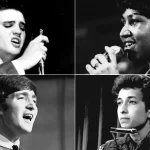
Step into the future of fashion where reality and technology seamlessly merge to create a whole new experience. The runway is no longer confined to physical spaces, as augmented reality (AR) takes center stage in showcasing model portfolios like never before. Join us on this journey as we explore how AR is revolutionizing the way we interact with fashion, from virtual try-ons to digital avatars, paving the way for a dynamic and immersive shopping experience. Fashion’s new reality awaits – let’s dive in!
Fashion’s New Reality: The Rise of Augmented Reality in Model Portfolios
Welcome to the cutting-edge realm of fashion where augmented reality (AR) is reshaping model portfolios. AR technology in fashion offers a myriad of benefits for both shoppers and businesses alike. For consumers, the ability to virtually try on garments from the comfort of their homes enhances the shopping experience by eliminating guesswork and boosting confidence in purchasing decisions.
On the flip side, businesses can leverage AR to reduce return rates, increase customer engagement, and stand out in a competitive market. Real-world examples abound with brands like Prada elevating try-on experiences through AR mirrors while Ralph Lauren introduces digital avatars for personalized fittings.
Carolina Herrera makes AR accessible via web platforms, Macy’s combines VR and AR for immersive shopping journeys, and The GAP pioneers virtual dressing rooms for interactive styling sessions. Crafting an effective AR fashion app involves defining clear objectives, understanding your audience, choosing the right technology stack, ensuring user-friendly interfaces with realistic 3D modeling capabilities all leading to seamless integration testing before launch.
Understanding the Augmented Reality Technology in Fashion
Augmented Reality (AR) is revolutionizing the fashion industry by blending digital elements with the real world. This technology allows shoppers to virtually try on clothes, shoes, and accessories through a smartphone or tablet.
For consumers, AR provides a more interactive and personalized shopping experience without physically trying on multiple items. It enables them to visualize how the outfit will look before making a purchase.
Businesses benefit from AR as well – it reduces return rates due to ill-fitting garments and enhances customer engagement. By integrating AR into their model portfolios, brands can stay ahead of competitors and cater to tech-savvy customers’ preferences.
Understanding how Augmented Reality works in fashion opens up endless possibilities for both shoppers and businesses alike.
AR Technology in Fashion Advantages for Shoppers
Augmented Reality (AR) technology in the fashion industry brings a whole new dimension to the shopping experience for consumers. Imagine being able to virtually try on clothes, accessories, and even makeup from the comfort of your own home. With AR, shoppers can visualize how an outfit will look on them without physically trying it on.
One of the key advantages for shoppers is the convenience factor. No more long lines at fitting rooms or crowded stores – AR allows customers to browse and try on items with just a few taps on their devices. This saves time and provides a hassle-free shopping experience.
Moreover, AR enhances decision-making by giving shoppers a realistic preview of how garments will fit and look before making a purchase. This helps reduce returns and ensures that customers are satisfied with their choices. With AR technology in fashion, shopping becomes not just convenient but also interactive and fun!
AR Technology in Fashion Advantages for Businesses
Augmented Reality (AR) technology in fashion is not just transforming the way shoppers interact with products, but it’s also revolutionizing the game for businesses. For companies in the fashion industry, integrating AR into their portfolios comes with a plethora of advantages that can set them apart from competitors.
One significant advantage for businesses utilizing AR technology is increased customer engagement. By offering interactive and immersive experiences through AR apps or tools, brands can capture and retain consumer interest like never before.
Moreover, incorporating AR into model portfolios allows fashion businesses to showcase their collections in a dynamic and innovative way. This not only attracts potential customers but also creates a buzz around the brand, leading to heightened visibility and brand awareness.
Additionally, by embracing AR technology early on, fashion companies can position themselves as forward-thinkers in an ever-evolving industry. Staying ahead of trends and adopting cutting-edge technologies can boost credibility among consumers and establish a reputation for innovation within the market.
Real-world Examples of Augmented Reality in the Fashion Industry
Ralph Lauren Digital Avatars for Try-On
Ralph Lauren is at the forefront of fashion innovation with their use of digital avatars for try-on experiences. By integrating augmented reality technology, they are revolutionizing the way customers interact with their products.
Imagine being able to virtually try on different outfits and see how they look on your personalized avatar before making a purchase. This not only enhances the shopping experience but also reduces the need for physical changing rooms.
With digital avatars, customers can see how garments fit and move in real-time, giving them a more accurate representation of how the clothing will look on them. This level of customization and interactivity sets Ralph Lauren apart in the world of fashion retail.
By embracing AR technology and offering digital avatars for try-on, Ralph Lauren is setting a new standard for virtual shopping experiences that blend seamlessly with real-world expectations.
Carolina Herrera Accessible AR Through the Web
Carolina Herrera is revolutionizing the fashion industry by making Augmented Reality accessible through web platforms. By implementing AR technology on their website, they are providing a unique and interactive shopping experience for their customers.
Through the power of AR, Carolina Herrera allows users to virtually try on different outfits and accessories from the comfort of their own homes. This innovative approach not only enhances the customer experience but also helps in boosting online sales.
With just a few clicks, shoppers can visualize how a specific garment would look on them without physically trying it on. This feature eliminates guesswork and uncertainty when making online purchases, leading to higher customer satisfaction levels.
By offering accessible AR through the web, Carolina Herrera is setting a new standard for digital shopping experiences in the fashion world. Customers can now engage with their favorite luxury brand in a fun and interactive way like never before.
Macy’s Fusing VR and AR for Enhanced Shopping
Macy’s is breaking new ground by combining Virtual Reality (VR) and Augmented Reality (AR) technologies to revolutionize the shopping experience. Imagine being able to virtually try on clothes in a digital environment before making a purchase, all from the comfort of your own home. This innovative approach not only enhances customer engagement but also streamlines the decision-making process.
By fusing VR and AR, Macy’s is creating an immersive shopping experience that transcends traditional brick-and-mortar stores. Customers can now interact with products in a whole new way, leading to increased satisfaction and confidence in their purchases. The blend of these cutting-edge technologies offers a glimpse into the future of retail where convenience meets innovation seamlessly.
With Macy’s pioneering efforts in integrating VR and AR into their shopping platform, they are setting a new standard for online retail experiences that prioritize customer engagement and satisfaction. By embracing these advanced technologies, Macy’s is staying ahead of the curve in an ever-evolving industry landscape.
The GAP A Pioneering Virtual Dressing Room
The GAP has embraced innovation by introducing a pioneering virtual dressing room experience for shoppers. This cutting-edge technology allows customers to try on clothes virtually, revolutionizing the way we shop online. By leveraging augmented reality, The GAP is enhancing the digital shopping journey and providing a more interactive and personalized experience.
With this virtual dressing room feature, customers can now visualize how different outfits will look on them before making a purchase. This not only saves time but also reduces the hassle of returns due to incorrect sizing or styles that don’t suit personal preferences. The immersive nature of this technology bridges the gap between physical retail stores and online shopping, creating a seamless blend of convenience and engagement.
By staying at the forefront of technological advancements in fashion retail, The GAP is setting a new standard for customer satisfaction and user experience. This forward-thinking approach positions them as industry leaders in embracing AR solutions to meet evolving consumer needs effectively.
Crafting an Effective AR Fashion App
Crafting an effective AR fashion app requires meticulous planning and attention to detail. Define clear objectives right from the start to ensure your app meets the specific needs of your target audience. Understanding who will be using your app is crucial for tailoring the user experience accordingly.
Choosing the right technology stack is essential to bring your vision to life seamlessly. Opt for a user-friendly interface that enhances usability and engagement. Realistic 3D modeling plays a key role in creating an immersive try-on experience for users.
Ensure seamless integration of AR features into your app for a fluid and intuitive shopping journey. Thorough testing and quality assurance are vital to iron out any bugs or issues before launch. Develop a solid marketing and launch strategy to generate buzz around your AR fashion app.
Post-launch support is crucial for maintaining customer satisfaction and addressing any feedback promptly.
Define Clear Objectives
In the fast-paced world of fashion, setting clear objectives is crucial when diving into the realm of augmented reality. Before embarking on developing an AR fashion app, it’s essential to define what you aim to achieve.
Are you looking to enhance the virtual try-on experience for customers? Or perhaps streamline the shopping process through interactive features? Understanding your goals will guide every decision in the app development journey.
Clear objectives help align your team and resources towards a common vision. Whether it’s increasing customer engagement, boosting sales conversions, or staying ahead of industry trends, having defined goals provides a roadmap for success.
Take time to brainstorm and refine your objectives before proceeding with designing and implementing AR technology in your fashion portfolio. This initial step sets the foundation for a seamless and impactful user experience that resonates with your audience.

